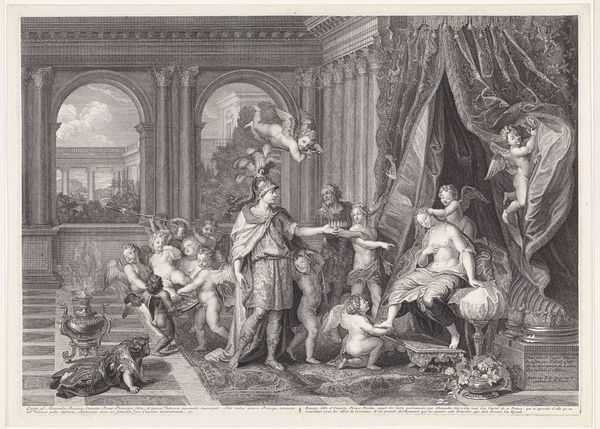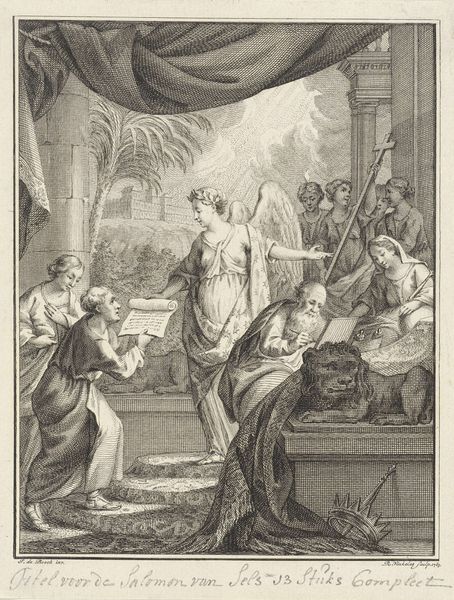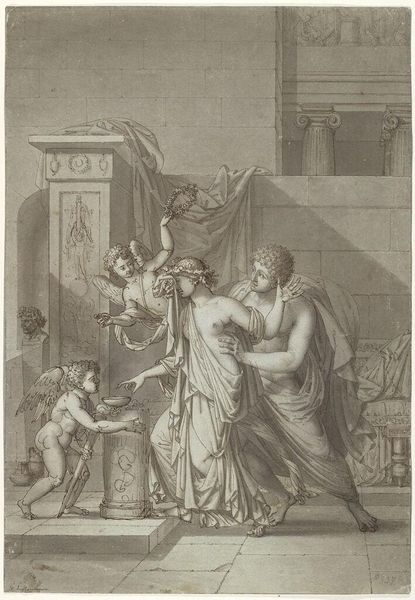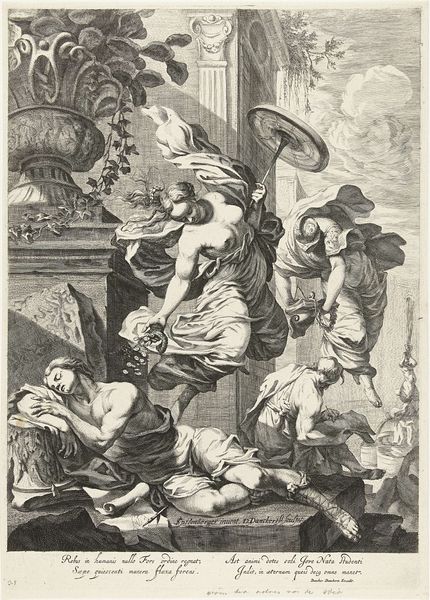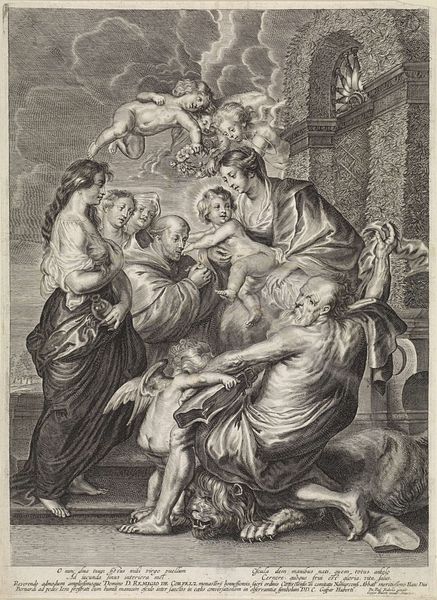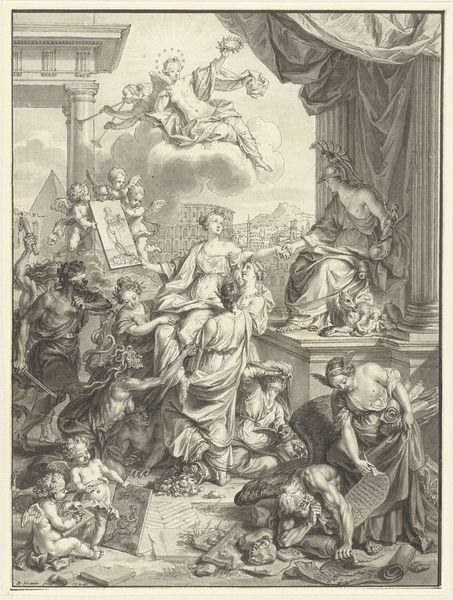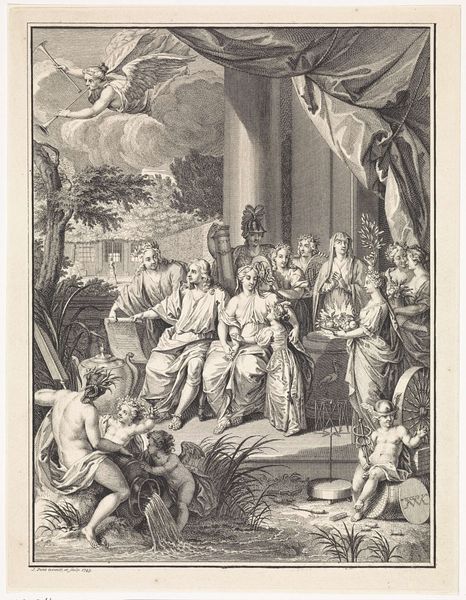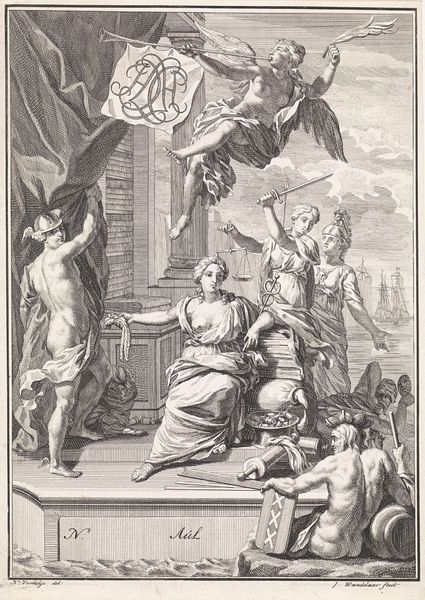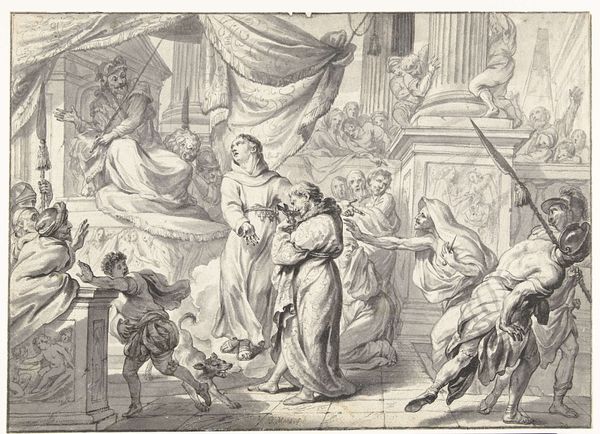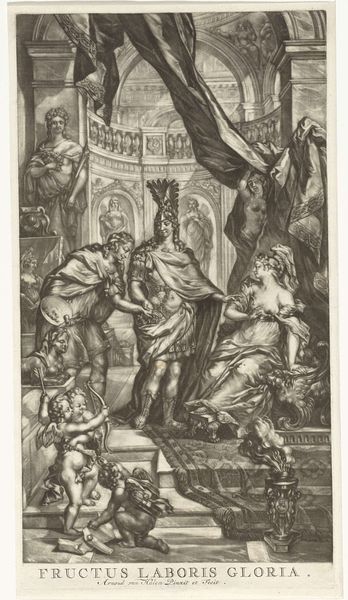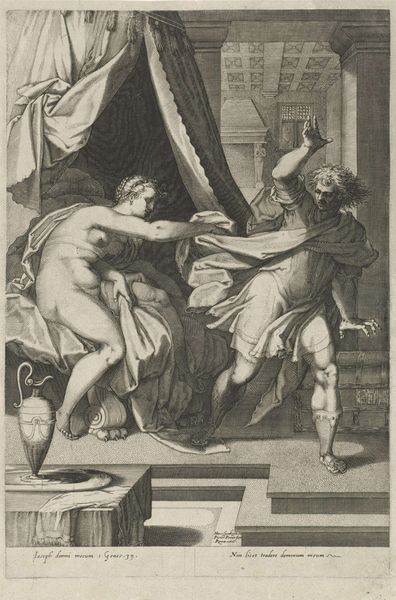
print, engraving
#
allegory
#
baroque
# print
#
old engraving style
#
figuration
#
history-painting
#
engraving
Dimensions: height 563 mm, width 440 mm
Copyright: Rijks Museum: Open Domain
Curator: Let's take a look at "Madonna Surrounded by Saints," an engraving by Paulus Pontius, dating sometime between 1616 and 1699. It's currently held here at the Rijksmuseum. What are your first thoughts? Editor: Overwhelming! The density of the lines creates a very dramatic chiaroscuro effect. See how the artist used hatching and cross-hatching to build up tone, giving the image a weighty, almost sculptural feel. It reminds me of academic drawings after classical sculpture. Curator: Indeed. Now, consider the socio-political climate of the era. The engraving reflects Counter-Reformation ideals, placing the Virgin Mary at the center as a figure of power and grace, a direct response to Protestant challenges to Catholic iconography. We can think about how gender is framed here, with Mary both revered and sexualized in the artistic tradition. Editor: Interesting point. I’m drawn to the symmetry in the composition. Mary and the Christ Child sit centrally. There is also the clear hierarchical organization; note how the figures on the periphery look at Mary, directing the viewer’s gaze toward her. Curator: Yes, and this visual direction, of course, works to reinforce her significance. It also speaks volumes about societal structures and the roles ascribed to women within the religious context, then and now. Editor: Absolutely, and while we are exploring context, consider the serpent slain at the lower right of the image. With it, the engraver suggests sin defeated; salvation embodied through the divine Virgin and her son. Curator: That reminds me, though Mary is central here, there are figures that hold their ground and present an assertive masculinity that may question traditional and normative constructions. What can we unpack from that juxtaposition? Editor: True. Those imposing figures create a strong diagonal pull— counterbalancing the ethereal group of angels at the top of the engraving. The use of opposing diagonals animates the design and produces tension that keeps my eyes moving around the image. Curator: Ultimately, the piece functions as more than just a religious depiction. It stands as a reflection of social and theological power dynamics in the 17th century. Editor: Precisely, but without its remarkable balance and the controlled application of linear mark making it would simply fall flat, failing to impact the viewer today, irrespective of how relevant the iconography. Curator: Agreed. Thank you for lending a fresh lens. Editor: Likewise, it has been thought-provoking to look at the engraving from your perspective.
Comments
No comments
Be the first to comment and join the conversation on the ultimate creative platform.
